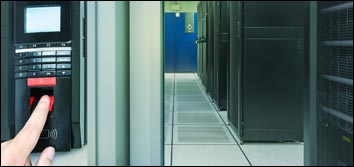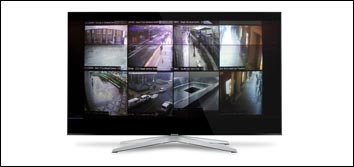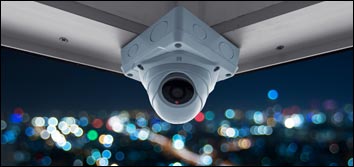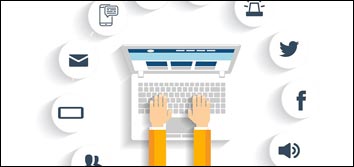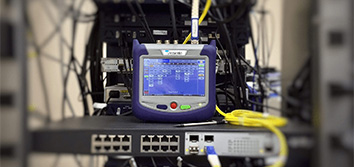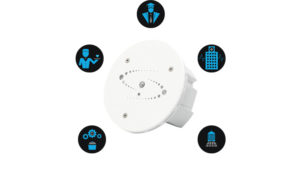ACCESS CONTROL SYSTEMS
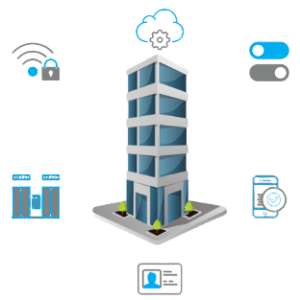
Everything you need to know about small business access control systems and all of your questions answered.
The safety and security of your business are a top priority. Having a commercial access control system in your Chicago area business is essential to protecting your staff, property, and company information.
When it comes to biometric control system installation, it’s important to choose from the top access control companies in the Chicago area to ensure that the job is done correctly. The right provider will not only provide you with the best installation services but also offer ongoing support and maintenance to keep your system functioning at optimal levels. By partnering with the top access control installers, you can be sure that your security system installation is in good hands and that your business is fully protected.
In this complete guide, you will learn how to make informed decisions about your access control system in Chicago and how to secure your business.
What is Access Control?
Access control is defined as the process of selectively restricting and managing the ability to enter or exit a specific area. Commercial access control systems are designed to provide entry to a building, room, or other area to authorized persons while restricting unauthorized individuals. For Illinois businesses, preventing unauthorized access is essential for minimizing risk.
The small business access control system that you choose needs to be functional, as it will play a part in your daily operations. Commercial access control systems can range in complexity with a variety of features. An effective system provides quick and convenient access for authorized persons while securely restricting others.
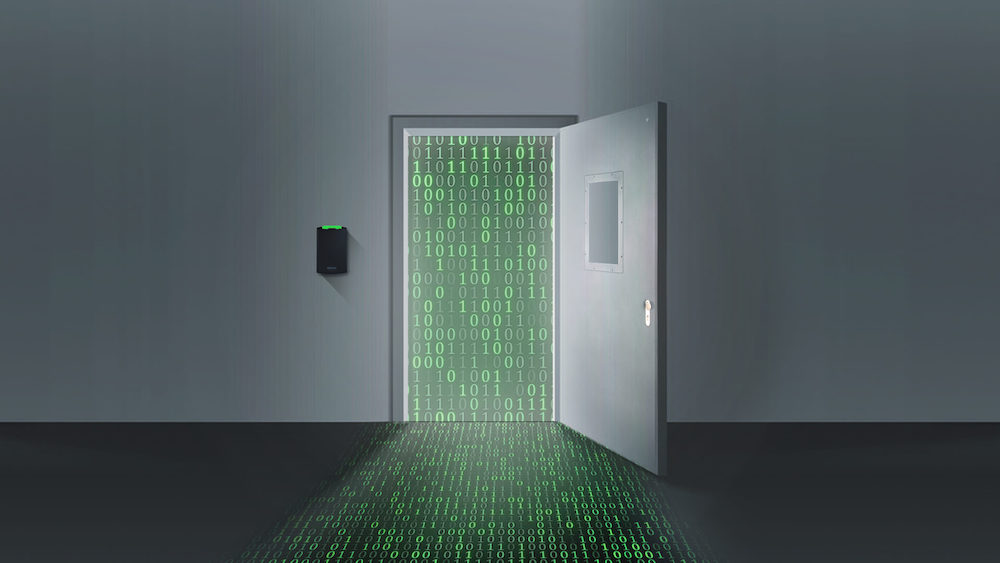
Commercial Access Control Systems
Controlling who enters your Chicago area business is the first line of defense against intruders, thieves, and potential employee misconduct. When it comes to protecting your staff, property, and data, choosing the right access and security system is crucial. That is why Umbrella Technologies is here to help. This detailed guide will give you a better understanding with the following chapters:
JUMP TO A SPECIFIC CHAPTER
JUMP TO A SPECIFIC CHAPTER
Chapter 1:
![]()
Types of Access Control Systems
Access control systems have evolved over the years as business security needs have increased. Rather than relying on mechanical keys, security guards, and paper sign-in sheets, electronic access control systems use computers and advanced technology to improve control and monitoring.
Chapter 1:
![]()
Types of Access Control Systems
Access control systems have evolved over the years as business security needs have increased. Rather than relying on mechanical keys, security guards, and paper sign-in sheets, electronic access control systems use computers and advanced technology to improve control and monitoring.
Touchless Access Control
Covid-19 has shifted preferences for access control technology. People in Illinois no longer want to touch public door handles, push buttons on elevators, or swipe a proximity card reader for an access control system. Instead, they prefer touchless, contactless, and hands-free control of door access. Touchless access control is designed to offer a contactless way for employees and visitors to enter a facility. With touchless access control systems, you can eliminate any need for physical contact. Employees can use face recognition, hand wave technology, or mobile apps to get inside the building without ever having to touch a keypad or button.
Managing Systems & Users
There are two different styles of access control systems: networked (IP) systems and traditional standalone systems. There also three primary ways of managing access permissions for these systems. The type of system that is best for your business depends on your security and business needs. Here are some quick questions that will guide you in the right direction:
☑ Are you managing a single building or multiple building locations?
☑ How many doors do you need to secure inside the facility?
☑ Are certain areas going to require higher restrictions?
☑ Are certain users or groups of people going to need different permissions?
☑ How would you like to manage, track, and report?
☑ What existing software or hardware does the system need to integrate with?
☑ Does access need to be scheduled for days and times?
☑ Are there industry compliance requirements?

Standalone vs. IP Networked Access Control
Standalone systems are the traditional method of managing access control in smaller facilities. The system is managed by an access control panel. This panel connects the various readers, electronic door locks, and cameras with power and communication wiring. Control panels can only manage a limited number of doors, typically less than 10, making them ideal for smaller environments.
IP networked systems are becoming more popular as business and security requirements expand. In this system, the access control components connect directly to a network using a wireless or Ethernet connection. Information is sent in real-time, which allows for increased user management, tracking, and auditing. This set-up also removes the limit on the number of doors that is commonly associated with standalone systems.
Types of Access Control
There are many ways to manage access control permissions for users. The type of access control is determined by how users are assigned and how access permissions are managed. The three most common types of access control permissions are role-based access control, mandatory access control, and discretionary access control.
Role–Based Access Control (RBAC)
Role-based access control (RBAC) is the most common form of managing user permissions. In this approach, permissions are granted to roles and then those roles are assigned to users. This method includes rights-based access control that relies on attributes, such as job, resource needs, environment, and more.
RBAC makes it easy for administrators to manage users in role-based groups. These groups can be broken down by position, location, authority, or any factor that makes sense to your business. Generally, this system is designed to let users only access the information, areas, and scheduling needed for their job. As a result, users do not have access to sensitive data that is not needed to fulfill their responsibilities. This is especially important when it comes to working with contractors, third-party organizations, large companies, and the healthcare industry. Role-based security is a flexible and secure method for managing user permissions.
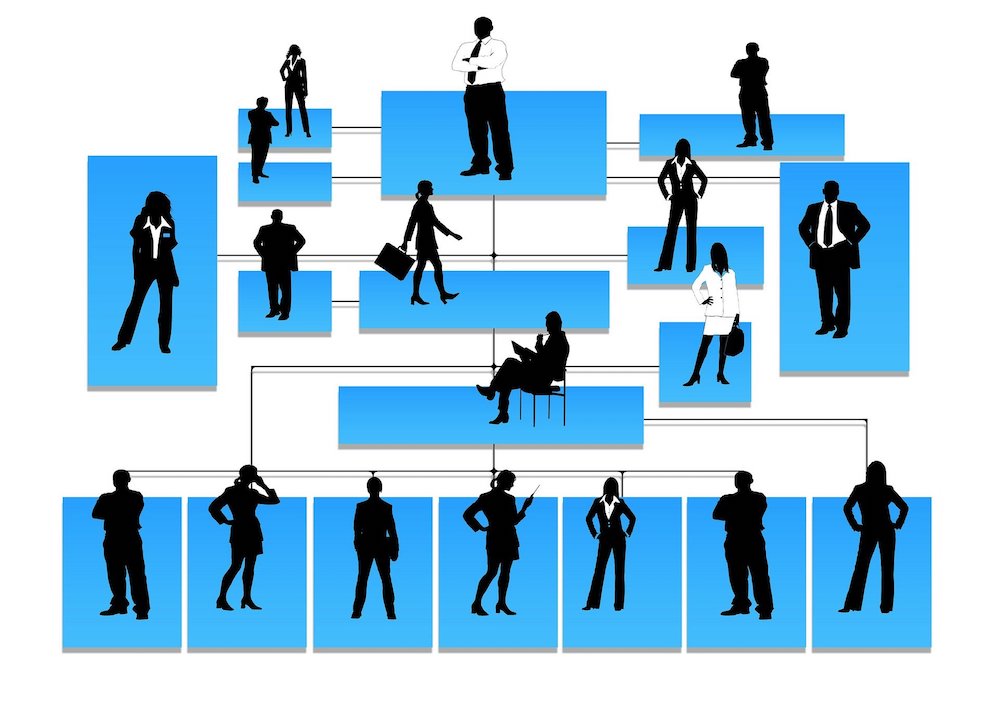
Mandatory Access Control (MAC)
Mandatory Access Control is the most restrictive type of access control user and permission management. In this approach, administrators must assign a label to each individual. This label is based on an access control policy that is enforced uniformly across all users. Any action taken by a user is tested against the standardized policy to determine if that action is allowed.
MAC is designed with a hierarchal order. This makes it a common method for organizations with an increased focus on confidentiality and proper classification (ex: military institutions). Users are not able to override the access control policy for themselves or other users. This helps to ensure consistent enforcement of the access control policy.

Discretionary Access Control (DAC)
Discretionary access control is the least restrictive approach for managing permissions. In this approach, the administrator is responsible for deciding which people have access to specific places.
DAC allows individuals to have complete control over any areas which they oversee, and the devices associated within those areas. Discretionary Access Control provides increased flexibility at the risk that permission may be granted by an admin to users that may not need it. This approach is often contrasted with the uniform application of permissions in mandatory access control.
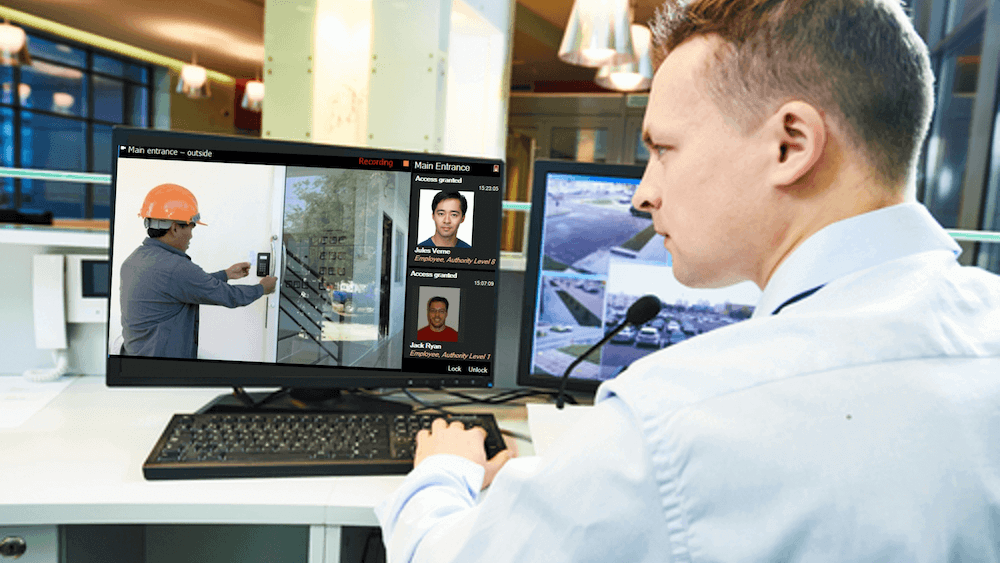
Access Control Features & Applications
Different Chicago area businesses and industries can have unique access needs. Fortunately, there are many ways to configure an access control system. With all of the customization options, it is easy to design and scale a security system to fit your unique operational requirements. Some features of access control systems for businesses include:
☑ Set security requirements to restrict access for different areas of the facility
☑ Manage permissions on the individual employee level
☑ Schedule user access based on time and day
☑ Monitor which access points are activated and by which users
☑ Tracking and reporting user movements
☑ Restrict workstations, file/server rooms, printers, and entry doors
☑ Receive message alerts for suspicious activity
☑ Give delivery, regular customers, and members scheduled code-access
☑ Remotely manage your system using the internet or a mobile app
☑ Integrates with security cameras and biometric/facial recognition technology
☑ Scalable from two to thousands of doors across hundreds of locations
☑ Compatible with existing hardware including readers, strikes, and maglocks
Chapter 2:
![]()
Access Control Components & Parts
Commercial access control systems are highly customizable and can be designed to fit specific Illinois business needs. There is a wide variety of access control components, equipment, and parts that can be combined to design a complete security system. Below are some of the most common parts used in commercial access control systems.
Chapter 2:
![]()
Access Control Components & Parts
Commercial access control systems are highly customizable and can be designed to fit specific business needs. There is a wide variety of access control components, equipment, and parts that can be combined to design a complete security system. Below are some of the most common parts used in commercial access control systems.
Card Readers & Credentials
Readers are devices that are used to electronically “read” a credential. When a credential is presented to the reader it sends the credential’s information to the control panel or networked system hub to determine if access should be granted. If granted, the reader will send an output signal to release a door locking mechanism. Readers are often equipped to recognize the most common form of credentials including cards, key fobs, and smartphones. There are also readers that work with a keypad for passwords or even more advanced readers using biometric scanners and facial recognition.
Key Cards & Fobs
Card credentials can be branched off into a variety of technologies that interact with readers. The main feature is that each card is uniquely encoded to a user profile. Access cards can be physically inserted or swiped when reading a magnetic stripe or barcode on a card.
There are also key card access systems that work based on proximity or contact. These credentials are stored on a keycard or fob that has a small security token that interfaces with the reader using RFID. With proximity technology, the card or fob can be read by simply holding it close to the card reader. The read range will determine the distance at which a card will transmit data to the card reader. This flexibility allows the credential to be added as a sticker to an ID badge or it can be a larger fob that fits on a keyring.
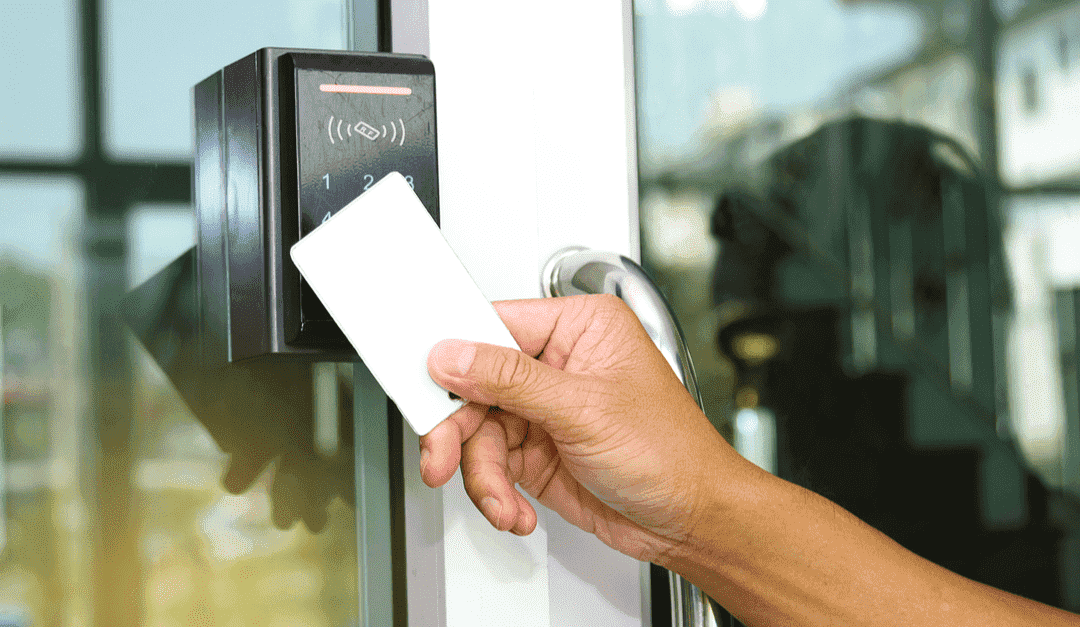
Keyless & Smartphone Credentials
Some readers have been developed to interact with smartphones, removing the need for a physical key or remembering a password. Mobile credentials can be sent or added directly to the user’s smartphone and be stored within a secure app. With these credentials, the user’s smart phone will communicate with the reader using Bluetooth Low Energy (BLE) or near field communication. Mobile access control can be used to replace or to complement traditional physical credentials, giving your Chicago area business increased flexibility.
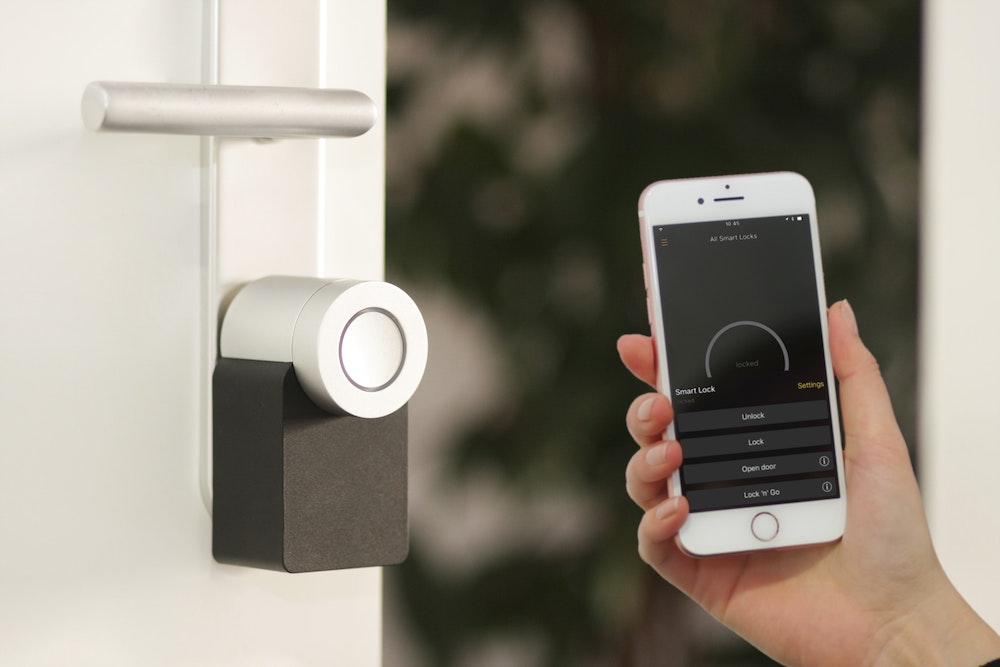
Door Access Control Components
Electronic access systems need to be able to control the locking of doors. That is where these four types of door access control parts come into play.
Electronic Door Locks – Electronic door locks are locking devices which prevent opening a door. These door locks do not use mechanical keys, instead they are controlled by credentials that interact with other parts of the access control system.
Electromagnetic Locks (Maglocks) – Electromagnetic locks prevent a door from opening using an electrical current. When access is granted the electric current is paused, releasing the door to be opened. (Maglocks are fail-safe: when power is turned off the lock releases)
Electric Strikes – Electric strikes are electromechanical devices that are housed in a door frame that interact with the locking mechanism of the door. When access is granted, a hinge in the electric strike will move to allow the door to unlock and open. (Available in fail-safe or fail-secure modes – Fail-safe models require power to unlock the door, so that the lock does not automatically release).
Push-buttons & Switches – Switches & push-buttons allow for remotely unlocking a door when a user activates the switch. Additional features such as time-delay, momentary release, maintained release, and emergency release provide more options for operators.
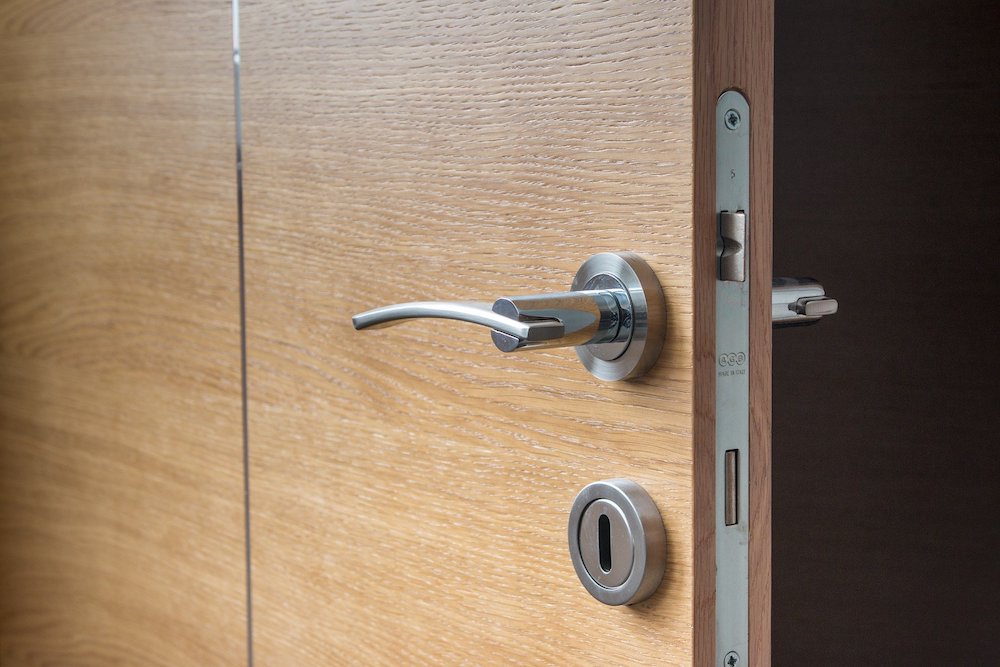
Physical Access Barriers
Beyond a locked door, there are a variety of physical access control elements that can be used to prevent entry to an area. Physical barriers are often used to protect heavily trafficked or vulnerable areas. Barriers that prevent entry include: turnstiles, speed gates, security revolving doors, door barricades, and interlocks. Physical access can also be used to control and protect through less conventional approaches like frosted glass and interior layout design.
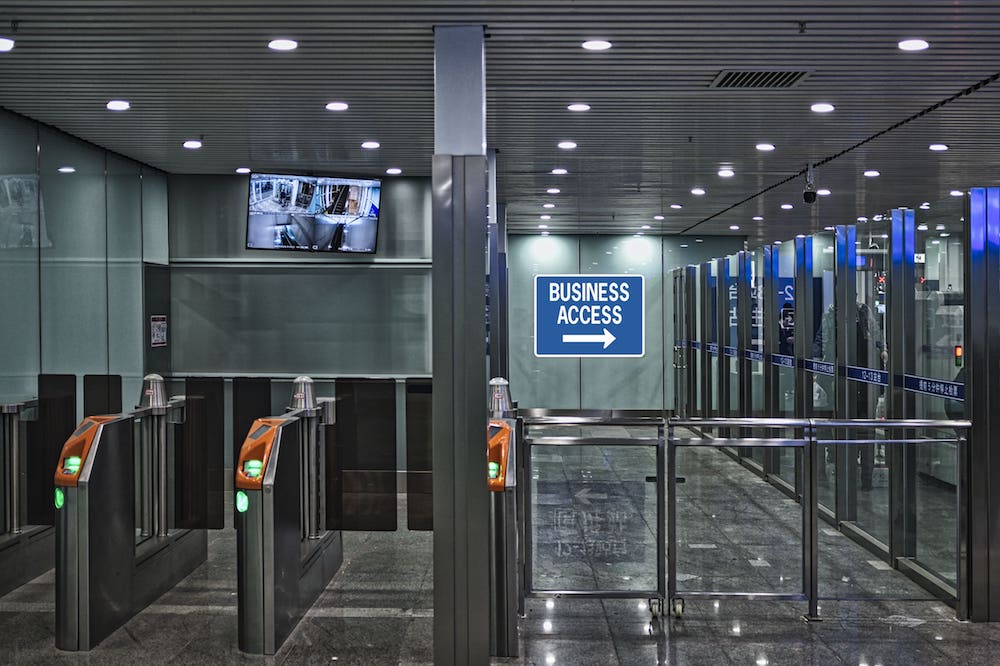
Layered Physical Access
When designing a commercial access control system for Chicagoland businesses, it is important to take into account physical security by planning for layered security. Perimeter solutions can keep intruders off of the property. Access cards keep unauthorized individuals from entering through exterior doors. Advanced user permissions limit access to areas within the facility to prevent theft. With layered physical systems, there are many different security measures that must be breached before safety is compromised.
Perimeter & Peripheral Management
Perimeter access control helps to restrict entry to a facility beyong the exterior doors of a building. Peripheral access components help to manage the unique elements within an Illinois facility that may require additional security measures.
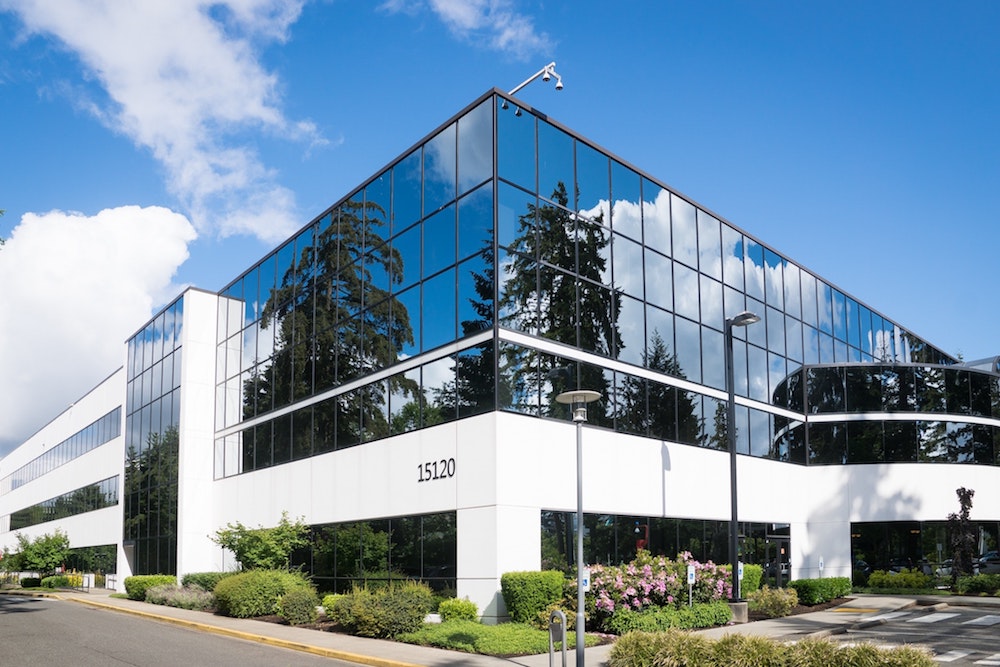
Gate Access Control
Gates and fences make it much easier to secure the perimeter of a property. By funneling contact through limited entry points the entire property line is more protected. At the gate, you can use a reader & credential system or station a guard to prevent entry.
Parking Garage Access Systems
Parking access control systems are used to control vehicle access in and out of a parking area. This is not designed to collect revenue for parking structures, instead it is used to manage which vehicles are able to enter a parking lot. Long range readers use credentials that can be read from 10-25 feet. These vehicle credentials are commonly mounted on a windshield, license plate, or using a handheld key fob. Typical uses of parking systems include Chicago area business parking areas, hotel parking garages, private residential complexes, and employee parking lots.

Elevator Access Management
Elevator access management systems are used to restrict access to specific floors. Large buildings in Chicago that host multiple businesses or require specific permissions based on the floor can benefit from elevator security management. Adding an elevator control to your existing system is easy and can use the same credentials.
Access Control Software
Access control software is used to manage the system and to allow for authentication, authorization, access, management, auditing, and reporting. Systems can range from small set-ups with a few doors to multi-location enterprises with thousands of doors. Additional features allow for remote management, monitoring security cameras, sending mass notifications, lockdowns in emergencies, and more.
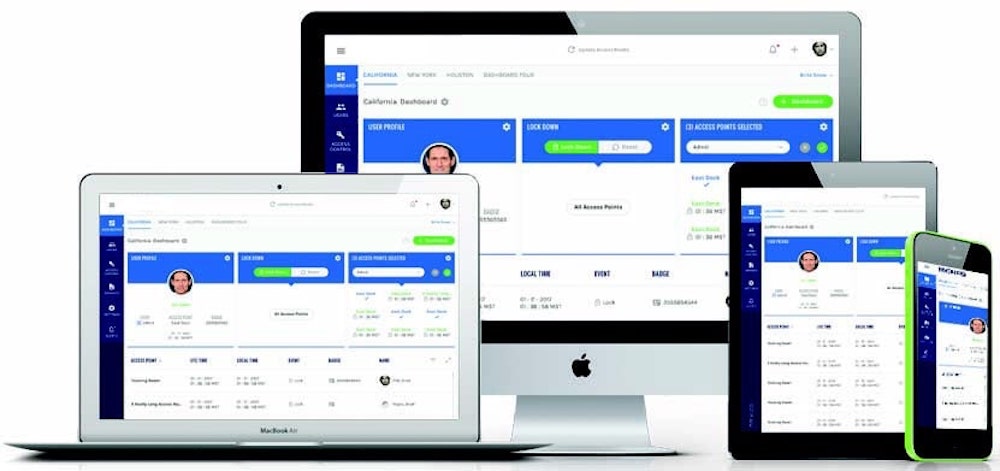
Access Control Panels
Access control panels are intelligent controllers used in standalone systems. All access control components in a building are connected to this panel in order to regulate permissions and grant access. The access control panel is housed within the building, but it is often hosted in a private room.
When designing an advanced security system with a variety of access control components, getting an expert’s help can be crucial to success. Umbrella Technologies can help you design an access control system for your Chicago area business and pick which parts to use. For a personalized assessment of how an access control system can improve the security, safety, and efficiency of your Illinois business, please contact us at 1-630-270-3313 or send us a quick message!
Chapter 3:
![]()
How Does Access Control Work?
Access control systems provide improved security by offering control over who is allowed to enter an area. Access control systems can have many components, but how most systems work can be explained in 5 steps. Each of these steps plays a role in making sure that the correct people are allowed and unauthorized people are rejected. Let’s review the 5 steps for how access control systems work:
Chapter 3:
![]()
How Does Access Control Work?
Access control systems provide improved security by offering control over who is allowed to enter an area. Access control systems can have many components, but how most systems work can be explained in 5 steps. Each of these steps plays a role in making sure that the correct people are allowed and unauthorized people are rejected. Let’s review the 5 steps for how access control systems work:


1) Authorization
The authorization step turns unidentified individuals into authorized users. In this step, administrators can keep track of who is able to get into the facility or specific areas. A company will establish an access policy using one of the types of access control (RBAC, MAC, or DAC) to manage access permissions. The role for each user will designate which doors or areas can be accessed and then encodes this information into a credential. For locations that regularly receive visitors or guests it is important to design a system that can grant temporary access to such guests.

2) Authentication
In this step, a person presents their credential (card, key fob, smartphone, etc.) to a reader. The access control system will then validate if the user should be granted access by referencing it against the database of authorized users. Regardless of outcome, the system will store the data from each interaction so that it can be referenced later in an audit.
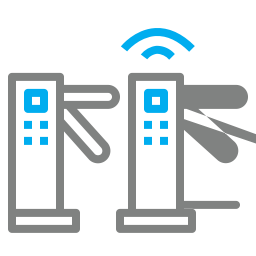

3) Access
If the database identifies the credential as having the correct permissions it will allow access to the area. This access is allowed by sending an output signal to the door access control components (electronic door lock, electric strike, or maglock) to release the door lock. In the case of fail-safe locks, access is granted by pausing the electrical current to the lock, allowing it to release. On the other hand, fail-secure locks are released by applying an electrical current to the locking mechanism.
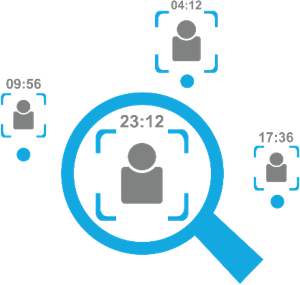

4) Managing & Monitoring
Managing a commercial access control system includes adding or removing credentials, changing permissions, adjusting schedules, or adding alerts. This process is handled on the backend of the system software. Administrators can also monitor the entry logs for users and access points. The modern access control software options offer cloud-based or smartphone-based management.
Cloud Management
One of the popular ways to manage a networked system today is by using a remote server hosted in the cloud. This allows your system to store, manage and process vast amount of data while being digitally hosted in third-party data centers. This means the users are not managed on the reader or a localized server, but instead are handled within a centralized system. With cloud-based systems your data is still available anytime, anywhere, and from any device. Operators that use a remote cloud system have increased flexibility and convenience.
Smartphone, Mobile Device, & Remote Access
Modern networked access control systems are designed so that it can be accessed remotely. This remote management allows users to interact with the management interface without having to be in the physical location. Often, the interface platform is available in a mobile app that can be logged into and controlled from a smartphone.
Video Surveillance
In order to increase the level of security within a facility, operators often choose to connect their access control system to a video surveillance system. Video surveillance allows creates a matching video feed of people who attempt to enter or exit the facility.
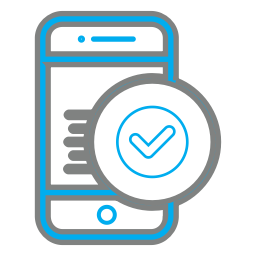
5) Auditing & Reporting
Administrators can create reports of access logs, user activity, and location activity. Reporting is necessary for investigating suspicious activity as well as verification during security threats. This also allows Chicago businesses the ability to make informed decisions about their staffing and operational procedures, conduct standard security reviews, and maintain compliance standards.
The amount and types of detailed data provided by an access control system depends on the integrations, such as visitor, time, attendance, and video systems. When auditting, it is important to recognize the duration in which a system stores the data, whether that is access to 1000 logs or indefinite logging. When you understand your reporting needs you can create customized reports that will save you time.
Chapter 4:
![]()
Why is Access Control Important?
Access control minimizes the risk of allowing unauthorized people into secured areas. Having the ability to control who can enter an area is critical because it protects physical assets, intellectual property/data, and employees while limiting the business’ exposure to harm and operational interruptions. Access control takes the guessing out of who, what, why, and how could that happen.
Chapter 4:
![]()
Why is Access Control Important?
Access control minimizes the risk of allowing unauthorized people into secured areas. Having the ability to control who can enter an area is critical because it protects physical assets, intellectual property/data, and employees while limiting the business’ exposure to harm and operational interruptions. Access control takes the guessing out of who, what, why, and how could that happen.
Physical Security & Safety
Steps must be taken in order to ensure that physical security prevents attackers from gaining access to a location and simply taking what they want. Vandalism, robbery, and employee theft are all types of security risks that can be mitigated by limiting who can enter your Chicago, Illinois business with proper access controls.
Another benefit of access control for businesses is being able to use the integrated access control system in order to address emergencies and incidents in the moment. Building access control systems can be designed to have alarms or PA systems that can help identify the fastest exit paths during an evacuation. Video surveillance can help identify the location of fires or natural threats accurately and quickly.
In today’s world, it is important to be prepared for the potential threat of an individual wanting to hurt others and the risk that your facility could be the location of an attack. Security cameras can help stop threats before they happen and prevent escalation by tracking specific people moving throughout a building with guaranteed accuracy. Access control features can further prevent movement throughout your building and limit an intruder to areas where there is not a threat to life. Physical access control solutions are critical to the safety and security of staff, equipment, infrastructure, and other company assets.
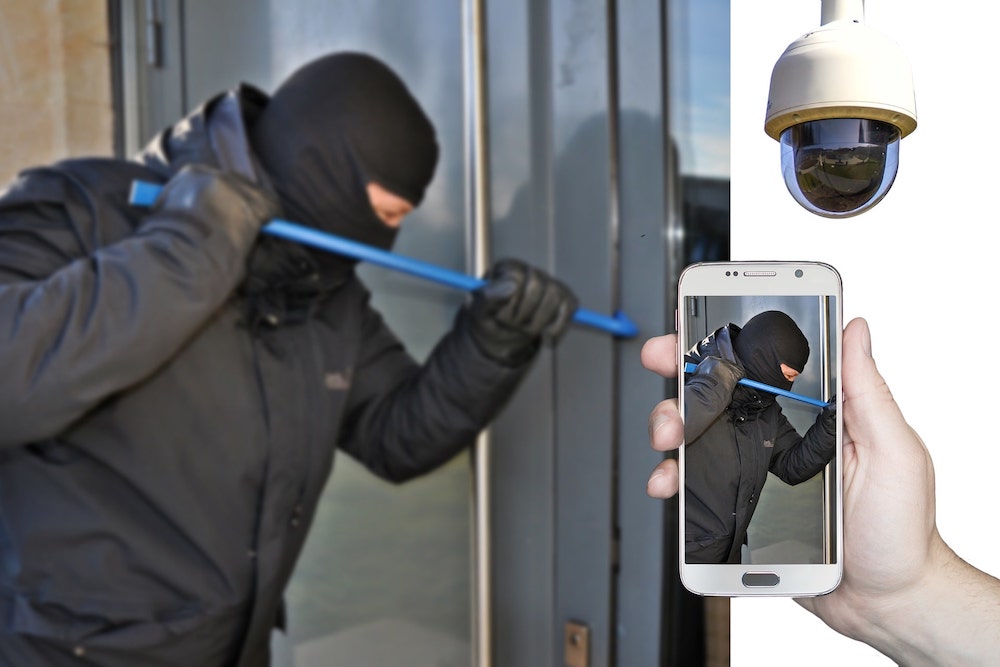
Data & Security Compliance
If proper access control is not properly maintained by an Illinois business then all of the work put into data and information security can quickly be undone. A firewall, encryption, and other security features still leave information vulnerable when an attacker has direct access to server equipment, hard drives, and computers. Sensitive information can be stored on USB drives, laptops, smartphones, tablets, or any portable file storage device. Then, if proper access control systems are not in place the hacker can simply walk out the front door with your data and proprietary business information.
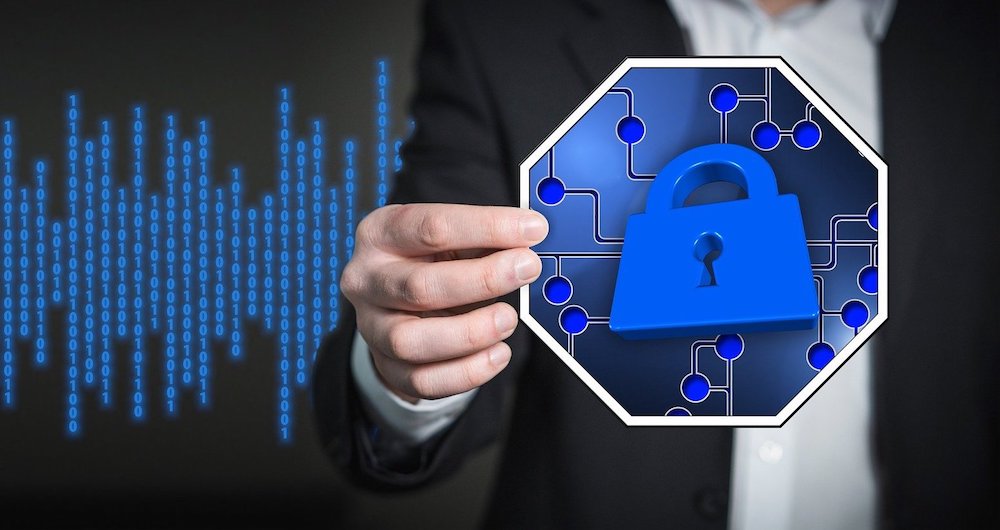
Sensitive Data & Personal information
Data is the new gold of modern society. Where there is personal data, there are people trying buy or steal that data. Hackers can sell valuable data including social security numbers, credit card details, birthdates, and more on the black market of the dark web. As a result, businesses that deal with private information, personal data, or sensitive details need to control who can come into contact with that data directly and who has access to computers or devices that house that data.
Plus, in the era of General Data Protection Regulation (GDPR) people have begun to pay more attention to their personal data and how it is used. If your Chicago area business is not taking the right steps you could be facing legal and regulatory action for negligently securing personal data.
Following an information and access control policy can help your business to protect sensitive information. By taking simple steps and with proper information training you can prevent 90% of cyber security attacks. Requiring users to create difficult passwords and leveraging multi-factor authentication for logins can improve the security of business accounts. Certain industries in Illinois, such as healthcare and financial/banking, have increased security standards and regulations that they must follow to ensure that data is not compromised.

Improved Business Operations & Efficiency
Developing a customized access control system is not only about security and safety, it can also be a tool for improving business operations, cutting unnecessary expenses, and improving efficiency. With access control system reports in place a business is able to make better and more informed business decisions.
- ☑ Tracking the hourly and daily customer traffic helps business to improve their staff scheduling to be more efficient.
- ☑ Businesses can spot trends and patterns that affect customer service based on time, day, location, and specific staff.
- ☑ Employees can be held more accountable for attendance and tardiness by tracking their movements and when they enter or exit
- ☑ Monitoring foot traffic data enables retail stores to create heat maps of areas in their store to better promote high-margin products.
- ☑ Business owners can remotely grant or schedule access for other individuals or companies without having to be at the facility.
Chapter 5:
![]()
Designing a Commercial Access Control System
Picking the best commercial access control system for your needs can be a big project for your Chicago area business if you are new to security. There are hundreds of systems, with a range of products and components, and each one has distinct integrations and features. Open-source access control systems are composed of individual components from a variety of manufacturers.
Chapter 5:
![]()
Designing a Commercial Access Control System
Picking the best commercial access control system for your needs can be a big project if you are new to security. There are hundreds of systems, with a range of products and components, and each one has distinct integrations and features. Open-source access control systems are composed of individual components from a variety of manufacturers.
System Planning & Installation
Planning for an electronic door access control system is no easy task. This is where security consultants, like Umbrella Technologies, can help make the decisions easier. If you want to begin the project on your own, there are a few things that you should consider in your planning. That is why Umbrella Technologies has developed an in-depth access control system design guide that will help you organize and plan for the operational and technical tasks of installing an access control system. Complete the quick contact form to get instant access to the FREE downloadable PDF guide.
In this guide, you will learn about:
☑ Access Control System Design
☑ Planning
☑ Procurement
☑ Project management
☑ Testing
☑ Training
☑ Who needs to be involved
☑ Establishing operational levels
☑ Access permissions
☑ Setting up credentials
☑ And more…
Download the complete guide on planning a successful access control system installation
After reading this guide you will be ready to take the next steps for installing your access control system. Umbrella Technologies is a leading expert in commercial access control consulting & integration. We have the experience, knowledge, and technology to make sure your Chicago area business is fully covered. We can help you get organized and plan for your access control needs. If you have any questions, please give us a call: 1-630-270-3313
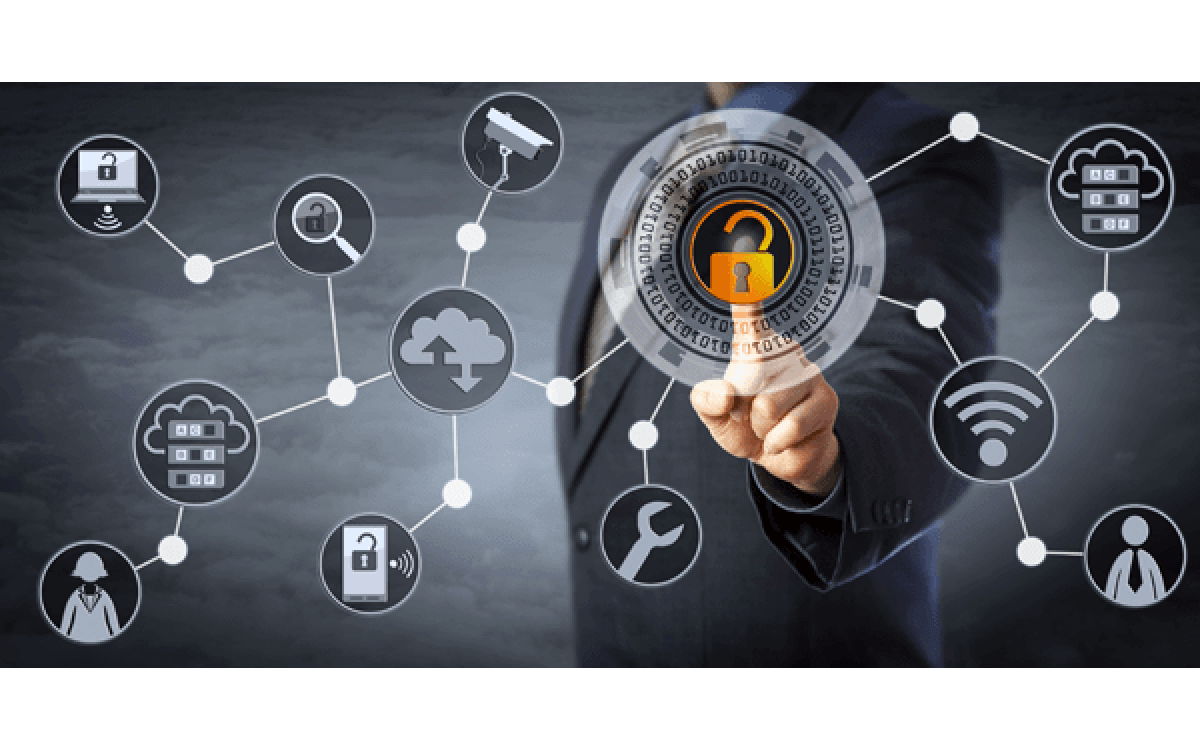
Manufacturer Reviews & Recommendations
Umbrella Technologies has independently reviewed many of the companies and products in the access control industry. As security consultants, it’s our job to separate the “Marketing Hype” from what works in the field. We provide our unbiased analysis of the products and whether or not it is a good fit for specific applications.
In these reviews, you can read our expert perspective of the product manufacturer, its hardware, and its software. If you’re searching for the best access control system for your facility, then reading our reviews will help narrow your search. You can also explore open-source access control options, which allow you to customize your system with hardware and software from different manufacturers. Check out all of our manufacturer reviews including:

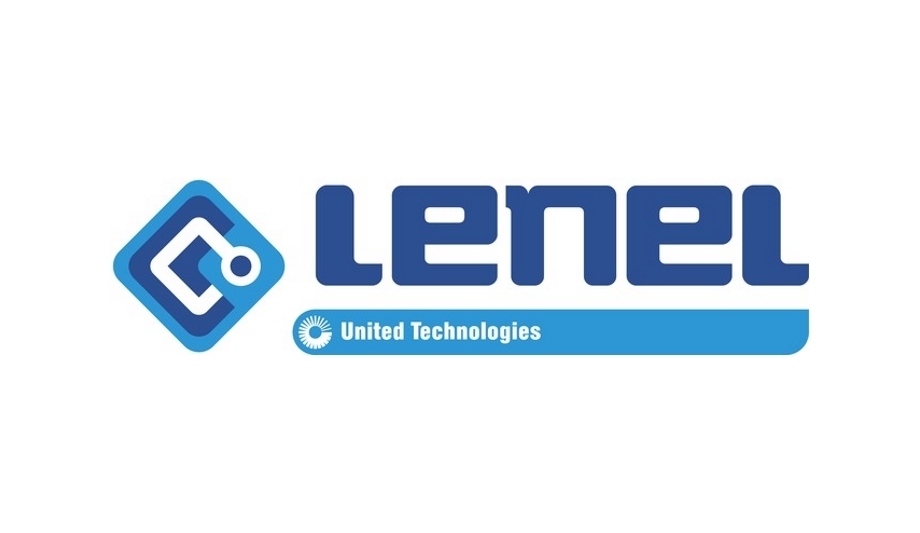
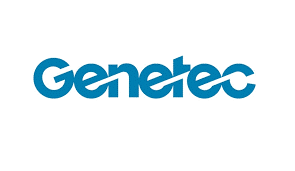
Configurations & Models
When you get to the point of planning your model and system configurations it is important to identify the factors that might impact functionality down the line. It may be helpful to note which features are requirements and which would be nice to have. An effective commercial access control system is the frontline for securing your Illinois business. It is never good to cut a corner when you don’t know what is around the corner. You will want to be sure to have a clear idea of the following things that have been discussed in this article:
☑ Networked or standalone
☑ Number of doors
☑ Number of access points
☑ External exits
☑ How permissions are managed
☑ Type of credentials
☑ Hosting
☑ How the system is being installed
☑ Third-party or in-house monitoring
☑ Additional features (such as anti-passback, biometric scanning, facial recognition, video surveillance, alarms, etc.)
Chapter 6:
![]()
Access Control Technology in 2021
It is a truly exciting time for access control technology. If you are looking to upgrade or install a new access control system in 2021 it is important that the solution be scalable and compatible with future technology. Access control components and parts are more advanced than ever. Today’s systems integrate new functionalities to create a complete solution for business security. As more data is at our fingertips we need to position ourselves to make real-time decisions and to stop problems before they happen.
Chapter 6:
![]()
Access Control Technology in 2021
It is a truly exciting time for access control technology. If you are looking to upgrade or install a new access control system in 2021 it is important that the solution be scalable and compatible with future technology. Access control components and parts are more advanced than ever. Today’s systems integrate new functionalities to create a complete solution for business security. As more data is at our fingertips we need to position ourselves to make real-time decisions and to stop problems before they happen.
State of the Industry
The security industry needs to understand what we are securing. We need to look at the full scope of access control technology in order to create a seamless user experience, improve efficiency, and maximize the security and safety of our working environments. We need to recognize the threats and risks from cyberattacks, hacking, social engineering, phishing, lost or stolen credentials, forced entry, and even simple user error. There is no access control system that is 100% impenetrable. But, by having the right security and access control system you can eliminate many of the risks.
Technology has become an integral part of our daily lives. As more devices become smart devices and as the IoT grows, it becomes important to be able to connect the pieces to make a complete system. Many operators have begun to reevaluate how pieces of their existing system can be leveraged using other parts of their operation to increase efficiency.
Using your phone for access and security is becoming mainstream. The younger generation has already made the jump. Our smartphones rarely leave our sides and they now use facial recognition to unlock. The variety of security applications are adding up: using mobile credentials to unlock electronic door locks, digital student IDs, paying with your smartphone, multi-factor authentication, work attendance, and more.
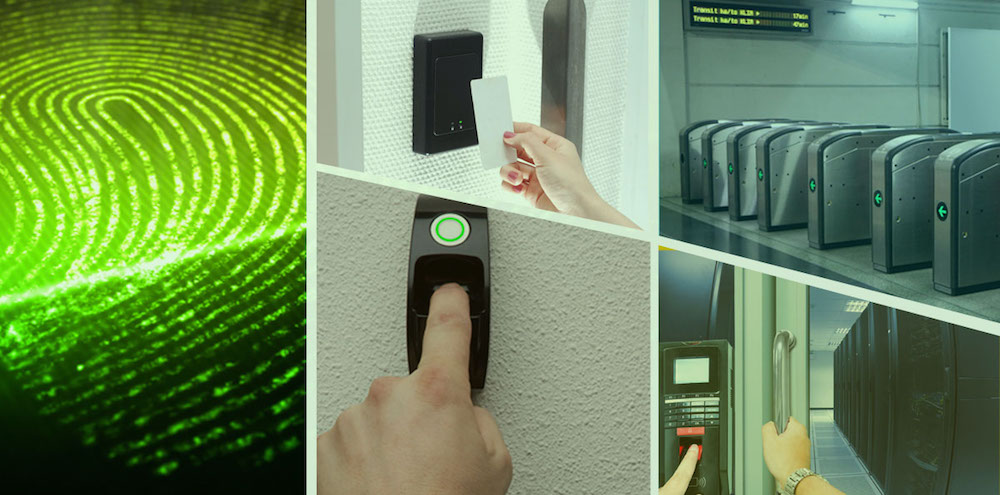
Planning for the Future
The future of access control systems will see an increase in biometric scanning and facial recognition technology. Biometric solutions read the physiological features of a person to verify identity rather than using a standard credential. Facial recognition takes it one step further by using AI and machine learning to detect the face of a person from different angles. The system then matches the face to an identify to make sure that the person belongs in a specific area.
In addition to these trends in access control technology, it is also important to acknowledge the needs of emerging markets. The rapidly growing cannabis industry, brings with it a new set of challenges and opportunities for security and access control compliance.
Our Technology – Umbrella Technologies
High-level technologies include:
Video Surveillance, Access Control, High-Definition Cameras, Cyber Security, Mass Emergency Notification Systems and much more.
The safety and security of your business are a top priority. Having a commercial access control system is essential to protecting your staff, property, and company information. In this complete guide, you will learn how to make informed decisions about your access control system and how to secure your business.
Video surveillance systems are more important than ever in today’s business environment. All businesses – large or small – need an effective system to protect their assets and remain profitable. According to the United States’ National Crime Victimization Survey, billions of dollars are lost every year to robbery, theft, and burglary.
Security camera systems may be the most powerful tool in protecting your business. Through proper implementation, business security cameras can deter crime, improve situational awareness, and even identify areas for improvement in business operations.
Umbrella Technologies can help you plan for emergencies. There is a wide variety of software and hardware solutions available on the market, and Umbrella Technologies can help you choose the right mass notification system to protect your business.
Every business participating in today’s globally digital landscape understands that threats to their network infrastructure is part of the price of doing business. Public and private businesses in various sectors stay vigilant in blocking cybercriminals from gaining access to network infrastructure.
The IoT smart sensor is a security monitoring device that detects threats in sound, light or air. The complex sensor solution is solving major health and safety problems within a compact mechanical design with no recurring software expenses.
In conclusion, the safety and security of your business are top priorities. You need a commercial access control system that can help protect your staff, property, and information. Umbrella Technologies is here to help you find the best access control system for your Chicago, Illinois business. We would love to talk to you and get you started on the right path. Please give us a call today at 1-630-270-3313 for a FREE, no-obligation, consultation about your security and access control needs. You can also send us a quick message and one of our experts will reach out to you within the next 24 hours.

